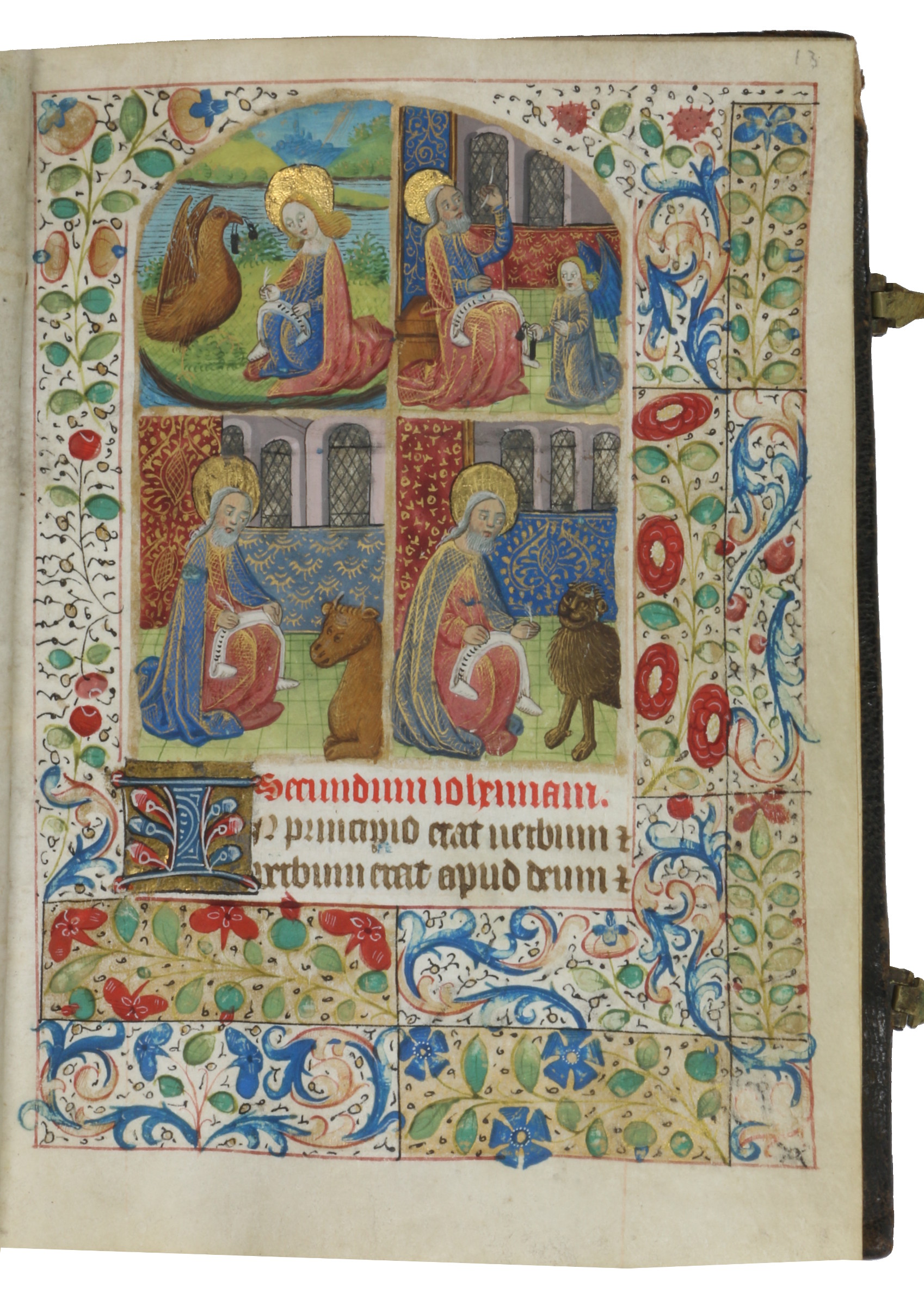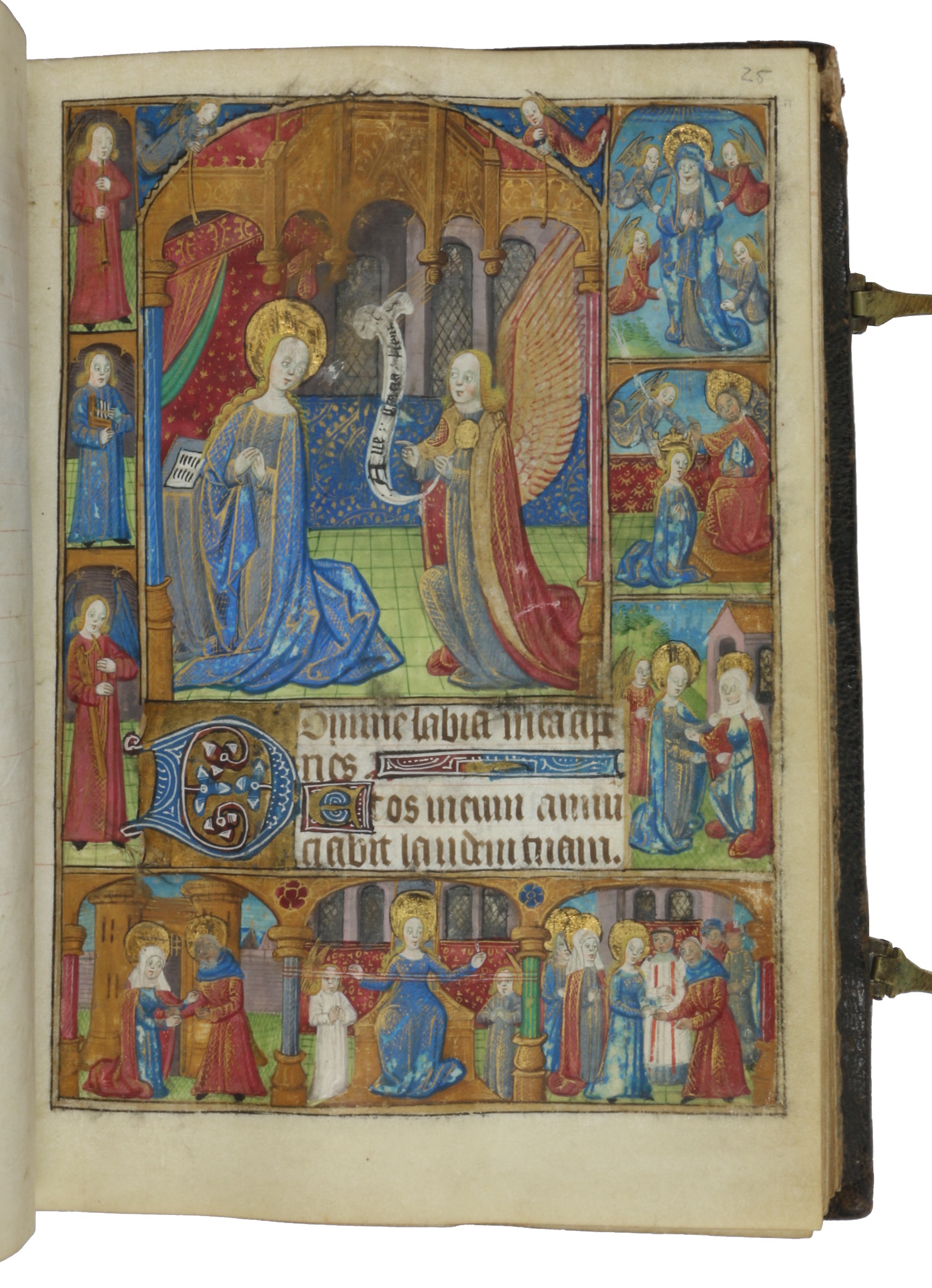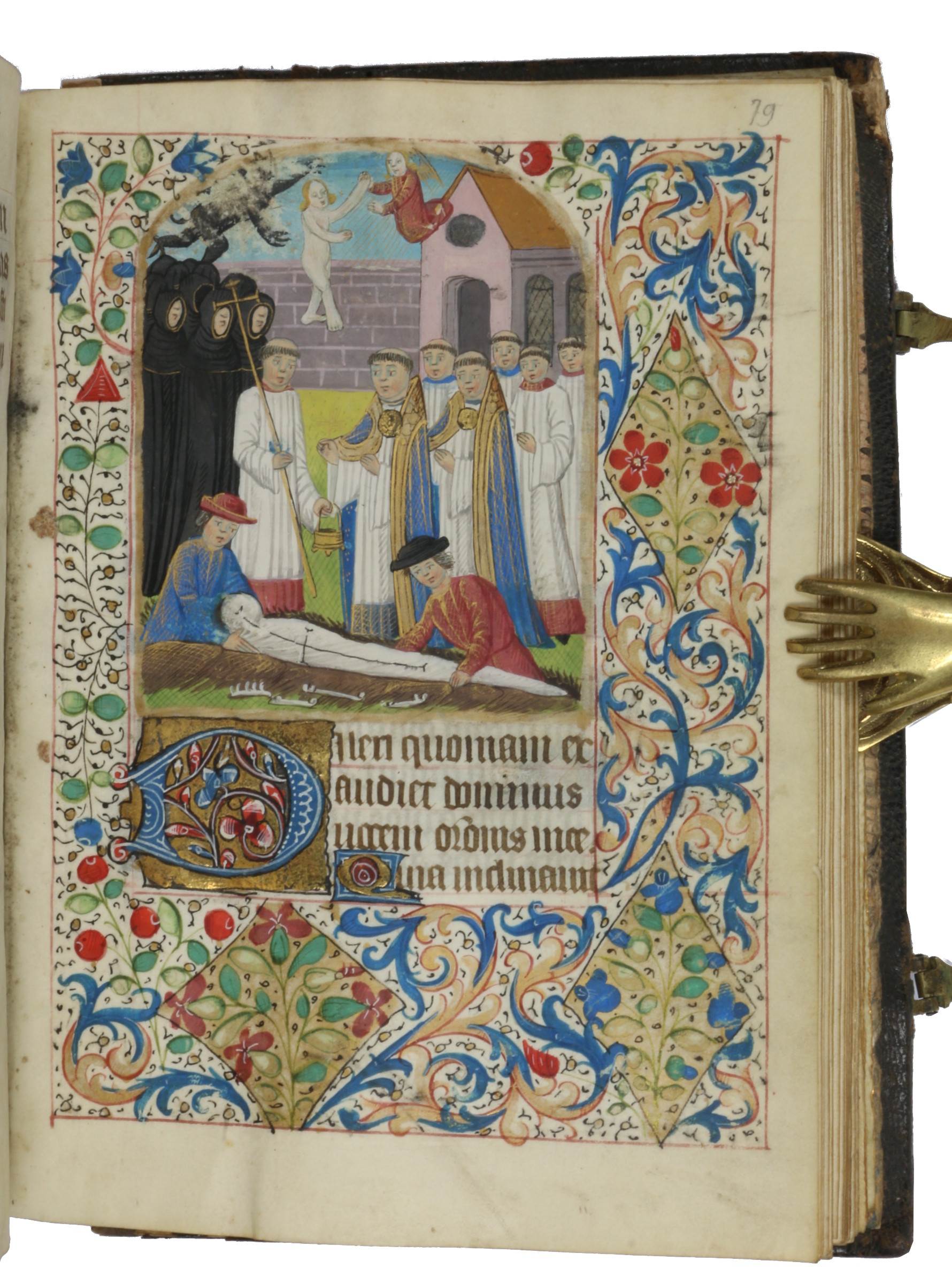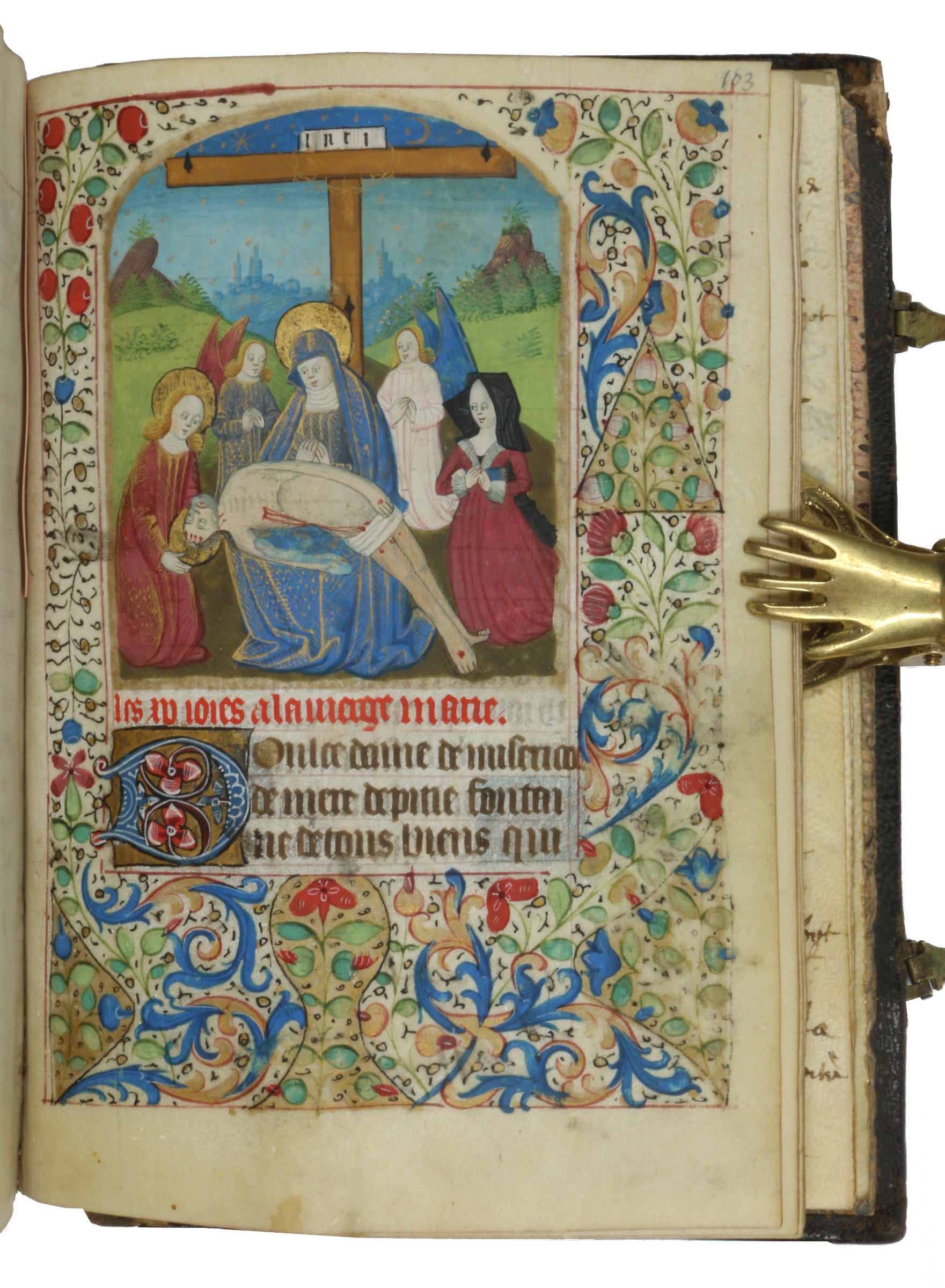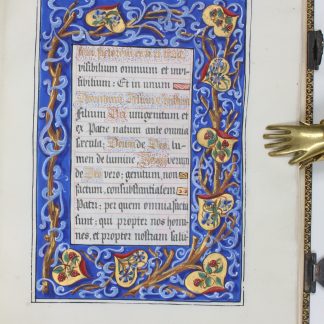[SOLD]
This item has sold. We are always interested in acquiring another copy or any item of comparable quality.
Finely illuminated Book of Hours
Latin and French manuscript on vellum.
8vo (ca. 135 x 180 mm). 110 ff. (24, 102, 109, 110 blank). Textura, 16 lines, black and occasional red ink; some yellow rubrications. 12 ff. of calendar at the beginning written in red, blue, and gold. With 8 miniatures within floral and illuminated borders, 9 floral borders surrounding the text, 17 large initials and hundreds of smaller initials and line-fillers, all in colours and gilt. Early 18th century dark brown morocco with elaborately gilt spine, gilt cover rules and fleurons in the corners. 2 clasps. Vellum endpapers. All edges gilt. Marbled pastedowns. Stored in custom-made half morocco solander case.
A meticulously penned and exceptionally finely illuminated livre d'heures from Northern France, possibly written in Normandy: the calendar commemorates St Romanus, the bishop of Rouen, in gilt letters (23 October). The miniatures include: folio 13r, the four evangelists; 25r, Annunciation of Mary; 42v, Nativity; 59r, King David; 72v, Crucifixion; 75v, Pentecost; 79r, a burial; 103r, Lamentation of Christ. The decorative borders enclosing the miniatures as well as the text are mostly surrounded by rules and show tendril ornaments, flowers and berries; only the Annunciation is enclosed by six small illuminations depicting six scenes from the life of the Virgin (Meeting at the Golden Gate, Marriage, Visitation, Coronation, the Virgin Enthroned, Assumption of Mary) and three angels playing music on a recorder, a portative organ, and a harp.
The appealing binding shows slight traces of worming. Lower spine-end and uppermost spine panel professionally repaired. The interior is wide-margined and clean. Occasional slight rubbing to some illuminations. Insignificant traces of adhesive tape to first and last endpaper (opposite the pastedowns). The two final blank leaves, as well as the vellum endpapers, are covered with genealogical notes on the Dijon-based Bernard family from the 17th and 18th century: by Bénigne Bernard, seigneur de Trouhans (1605-66), councillor in the Dijon parliament; his son Bernard Bernard de Trouhans (1643-1712); and his daughter Olympe, who notes the date of her parents' and her brother's death as late as 1748; also, a coloured and gilt coat of arms, dated 1698.
Provenance: Bernard de Trouhans family of Dijon (early 17th through mid-18th century); Hartung & Karl, sale 57 (1988), lot 13.



